Contents of the article “Which wax on my ski or snowboard”
- ice formation
- snow condition
- temperature
- hydrocarbon
- molybdenum
- fluor
- glide or kick wax
- powder wax
- liquid or rub-on wax
- and now?
You can probably remember that one time when you were at the top of the slope ready to start skiing or snowboarding, but you barely moved. Chances are that this had nothing to do with your style, but more with the wax at the bottom of your board or in some cases ice formation.
ice formation
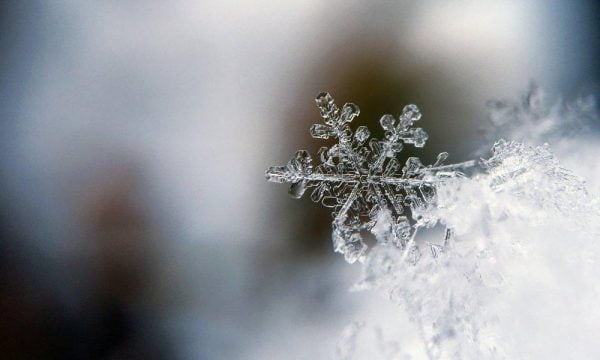
Often overlooked is water which can freeze and form a kind of rough sandpaper on snow. This phenomenon occurs because your Snowboard has been in the heated Ski storage overnight and is therefore at room temperature (20~23°C).
When you go out on the slopes and lay your ski flat on a fresh layer of snow, a very thin layer melts. Melted snow of course consists of more than 90% water, and it is only normal that this freezes due to the difference in ambient temperature.
You already know the result, the rough shape greatly reduces your gliding ability. Our tip? Don't jump on the skis right away, but let your gear warm up while standing upright.
Snow condition
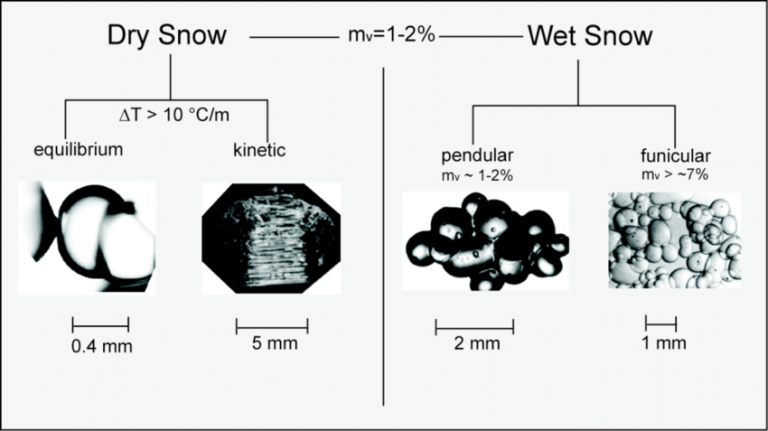
Snow is not universal. It has been extensively used here research done. In the wax industry we often classify snow as “wet” or “dry”, and as you might have guessed there is wax for both types. As a recreational skier you don’t have to worry about this as it depends on the moment; we rarely see someone on holiday waxing their snowboard or ski in the morning to go just that little bit faster. In a race however… the maintenance man will do a thorough analysis before the race starts.
On the one hand, one will look at the type of snow, but on the other hand also at the temperature of the snow and finally also at the air temperature.
Tip from Wax & Board!
Artificial snow in the indoor hall is hard and therefore aggressive for your material. If you regularly ski indoors, it is worth asking for Indoor wax. This is unfortunately a more expensive product, but it is more than worth the investment to protect the base of your Ski or Snowboard, so that it remains in good condition for that trip to the mountains!
Temperature
As indicated above, you need to distinguish between snow and ambient temperature (the air) when it comes to temperature. The pros among us use two thermometers, and not only that: the amount of sun, shade and wind are also taken into account to select a correct temperature range.
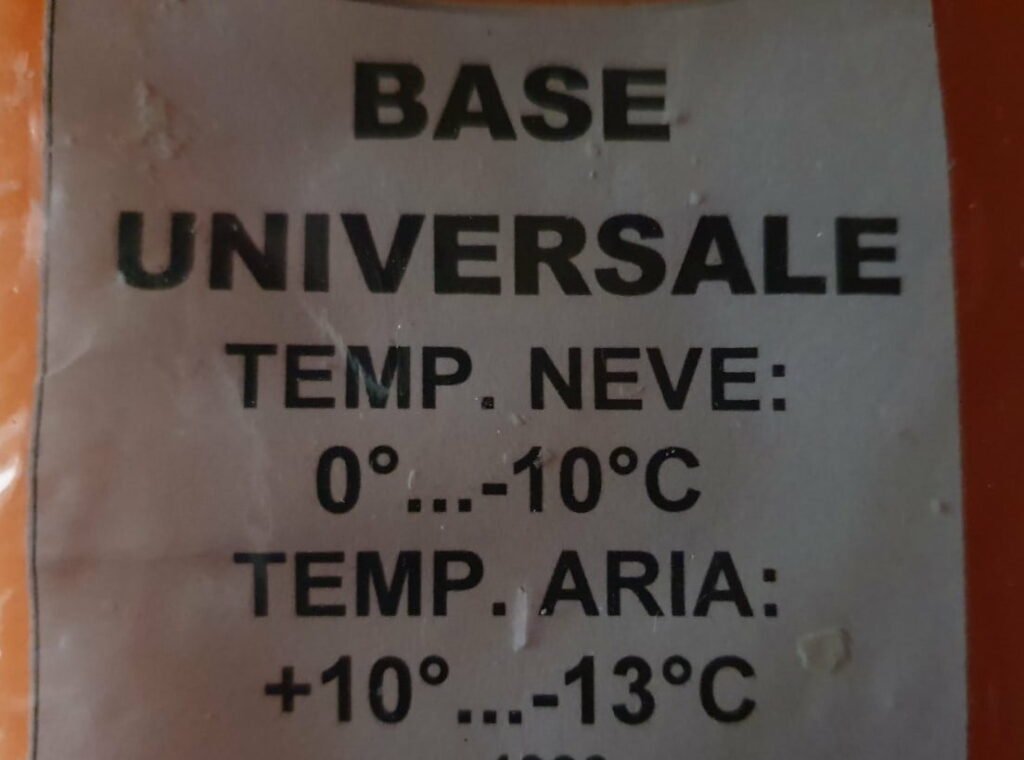
With the better wax you have an indication of the range of air and snow temperature. There are also smaller temperature ranges in which this wax will perform best.
However, most waxes that you can get in stores only have 1 temperature indication. For an amateur, it usually doesn't matter that much and it's easier to talk about just 1 temperature that we all recognize: the ambient temperature!
With this standard wax there are four categories: warm, cold, average & universal. To make a clear distinction, a color additive is added which unfortunately is brand-specific. These colors are often yellow - red - blue and white. Thanks to this color code you do not always have to store your wax back in its original packaging.
In almost every Ski and Snowboard workshop, they will apply universal wax during standard maintenance. This has a very wide temperature range; however, it is not really good for anything except to eliminate doubt. Do you know today in Belgium what the weather will be like during your ski trip in 3 weeks?
Tip from Wax & Board!
We have wax in stock for every condition. Are you going to shiver in the freezing cold “Little Tibet”, or do you want to board at the end of the season? Then we will gladly apply the right wax for you! Of course we also have universal wax in stock.
Hydrocarbon
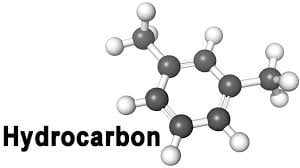
Wax always consists of Hydrocarbons; paraffin, microcrystalline, or synthetic products. Often it is about these 3 products that are crammed together in 1 blend by the manufacturer with their own secret mixture distribution. A short overview of what is useful for what;
- You will recognize paraffin from candles, it is super soft and gives minimal friction on snow.
- Microcrystalline is more durable than paraffin and will therefore lose its function less quickly.
- Synthetic products are designed to create a strong and durable wax, but often provide more friction than, for example, paraffin.
Molybdenum
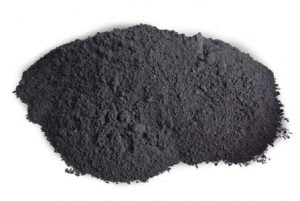
Molybdenum is a nice scrabble word, and just like graphite or fluorine an addition to the basic Hydrocarbon wax. Molybdenum and graphite have a nearly similar function. Nl minimize electrostatic energy that is created in cold, dry snow. In addition, they are useful to repel dirt that is hidden in warm snow by e.g. melt water.
Molybdenum was mainly developed as an additive to generate higher speeds, and natural graphite is applied to your ski or snowboard, which has a black base and can therefore discharge faster and therefore glide better.
Tip from Wax & Board!
After 3 to 4 times waxing with "normal" wax the black graphite effect of your Ski and Snowboard is completely gone. If the bottom of your material is pitch black then you can be sure that you have to apply graphite regularly. This wax is more expensive but worth the money. Do you prefer to apply it yourself? Then don't forget to wear a face mask because the natural graphite particles are harmful to your respiratory tract!
Fluor
No, putting toothpaste on your snowboard in the absence of liquid wax is a myth. Toothpaste has a coarse structure and that is not what you need.
Fluor is a water-repellent product. This is useful because the snow just under your ski melts due to friction while skiing. This layer of water must be drained, which is possible due to the structure of your base and of course also the layer of wax in the pores of this base. Because Fluor is water-repellent, this helps to drain water even better. This product is usually already processed in a block of wax but can also be applied in powder form. However, there are 2 disadvantages to Fluor; too much is really bad in this case. More Fluor will make you ski slower and that is why a chemical, or Hot Scrape, cleaning is frequently necessary to keep the Fluor level in proportion. The second point is up for discussion; Fluor is not good for the environment despite it being a natural product. There are two camps in this discussion but the fact remains that Fluor does not occur in nature on a pack of fresh snow. We therefore do not yet know for sure what impact this has on the surface and therefore also on the drinking water.
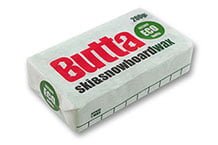
Tip from Wax & Board!
At Wax & Board we use ecological products, with or without Fluorine.
Glide or Kick Wax
As a skier or snowboarder, the biggest mistake you can make during maintenance is applying Kick wax. This type of wax is specifically made for the Nordic or Cross-Country skier and is also called Grip wax. As you can probably guess, this type of wax has one sole purpose: to create grip. This is necessary to be able to walk on steep, flat and slippery trails. In this case, the ski is partly provided with Glide wax and partly with Kick wax, whereby the Kick wax only makes contact with the snow when all your weight is on the camber profile. To apply Kick wax, you use special brushes such as cork and fleece.
Powder wax
This type of wax is rarely used here in Belgium, but you have probably walked past the powder wax aisle and thought “my god it´s expensive!”. This type of wax is almost exclusively used in races because you can then better determine the dose of Fluor. There is also powder wax available for extremely cold temperatures, which allows you to better dose by, for example, only providing the edges with specific wax.
Liquid or Rub-on-Wax
If we are completely honest, liquid wax is the purest wax there is. It is quick and easy to apply, contains no extra chemical junk -to get to a solid form like blocks of wax- and it is the most ecological solution on the market. However, for every advantage there is a disadvantage.
Liquid wax is so quickly lost that it is only useful as an interim solution on holiday. Liquid wax is therefore not a replacement for normal maintenance. You often buy this product in a tube with a sponge, with this sponge you can spread the product on your ski or snowboard base just before you go on the slopes.
Alternatively, there is also a more solid variant, which you can compare somewhat with butter. This solid Rub-on-Wax you spread over your entire base and scrape off with a scraper, to finally rub clean with a cloth.
Tip from Wax & Board!
one of both products actually belongs to your “winter travel essentials kit”. From day 2 or 3, apply this product before you go on the slopes, this way you prevent dehydration and you are sure of a good glide! After the holiday you can safely put your Ski or Snowboard inside for normal maintenance.
And now?
As you can see, the answer to the question “Which wax on my Ski or Snowboard?” is not so obvious. There are so many different options, and we have listed the most important ones for you here. At Wax & Board we advise all our customers personally, and we are assured that our Hot Wax technique is superior to what the market has to offer.
We would like to give you the following tips:
- Have your skis or snowboard serviced at the end of the season to prevent dehydration during the summer months.
- No Racer, or specific temperature requirements? Then use universal wax!
- Racing, Skiing in end of season slush, or Snowboarding in freezing temperatures? Ask for our specific wax!
- Do you have a black base? Have your Ski or Snowboard regularly charged with black graphite wax!
- Think about nature and consider using ecological wax!
